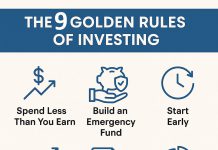★ Investing Strategy Research & Guides ★
- Growth Investing Strategies
- 9 Golden Rules of Long-Term Wealth Building
- 2025 Investment Outlook: What Wall Street Predicts
- How to Screen for Stocks
- 5 Time-Tested Ways to Profit in Stocks
- 7 Top Growth Stock Picking Services Tested
- High Alpha Strategies
- Beta Investing & Trading
- CANSLIM Growth Strategy Investing
- Forecasting Market Returns: 154 Year s of Data
- Cyclical Investing
- Finding Top Growth Stocks
- 5 Smart Ways To Invest Blue Chips
- Sector Investing Guide
- Sector Rotation: Is it Profitable?
- Value Investing – Ultimate Guide
- Dividend & Income Investing Mastery
- Dividend Investing: 10 Pro Tips
- 3 High Yield Dividend Strategies
- 4 Dividend Screening Strategies Tested
- 7 Dividend & Value Stock Strategies
- 5 Dividend Growth Stock Strategies
- Maximizing Dividend Yield
- Expert Dividend Strategies
- Dividend Reinvestment
- Dividend Reinvestment Plans
- Preferred Stock Dividends
- Qualified Dividends
- Index ETF Investing
- Alternative Investments: Gold
- Portfolio Management
- Next Section – Books >>
Investment Strategies
Investment strategies enable you to organize your approach to investing. Do you seek a regular income through dividends? Do you seek high growth companies? Or are you a bargain hunter looking for a value investment?
9 Golden Rules of Investing for Long-Term Wealth Building
Whether you're just getting started or seeking to refine your financial habits, these 9 golden rules will help guide you on the road to lasting financial freedom.
Fear & Greed Index July 2025: Decode Market Trends Now
Our Fear and Greed Index goes beyond the basics, offering nine real-time and historical charts to help you stay ahead. With live data from the Federal Reserve, VIX CBOE, and 15 technical stock price signals, you'll have the tools to make smarter decisions today.
Invest Better with Two Systems Theory of Behavioral Finance
The two systems theory posits that our brains use two distinct cognitive processes: System 1 (fast, intuitive, and emotional) and System 2 (slow, deliberate, and logical).
8 Steps to Build a Balanced & Profitable Portfolio
To build a balanced investment portfolio, determine how much to invest, your risk tolerance, portfolio allocation, and your investing strategy. Next, choose the right tools to screen and research the ideal stocks and ETFs to enable you to manage your portfolio effectively.
13 Epic Stock Portfolio Examples to Master Investing
Our years of performance testing reveal the world's best-performing stock portfolios are Berkshire Hathaway, CANSLIM, GreenBlatt's Magic Formula, and the FAANG portfolio. We share examples and show you how to implement them.
7 Steps to Managing Your Stock Portfolio Like a Pro
Managing a stock portfolio entails seven crucial tasks: conducting research, analyzing performance, rebalancing holdings, assessing correlations, planning future income, optimizing tax benefits, and analyzing future performance.






